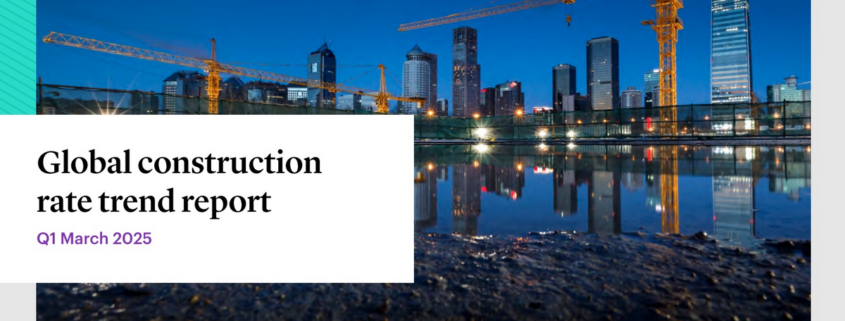Developers and Contractors in Asia Continue to Face Challenges Despite Uptick in Infrastructure Projects
The global construction industry is experiencing a remarkable uptick in data centre projects, propelled by the swift pace of technological advancement and the future demands of artificial intelligence (AI). However, this boom is set against the sobering reality of labour scarcities and escalating material expenses, which present formidable obstacles for both the construction and insurance domains, according to the latest Willis Global Construction Rate Trend Report for Q1, launched by Willis, a WTW company.
“In Asia, the construction industry is set to experience continued growth this year due to both government stimulus and private investments. This drives positive changes in the insurance markets. From large-scale infrastructure projects to the development of smart cities, the region continues its path of delivering complex and sustainable construction. The increased momentum towards sustainability is also a powerful force propelling construction activity in Asia,” said Nicki Tilney, Head of Construction and Natural Resources, Asia at Willis.
Despite robust growth forecasts and the drive for sustainability in the region, several critical issues are emerging in Asia, one of which is the shortage of skilled labour. These shortages can lead to poor quality construction and reduced adherence to safety protocols, prompting insurance markets to scrutinise project schedules and costs.

Supply chain management is another ongoing challenge. The availability and timely delivery of materials are critical to the success of any construction project. Disruptions in the supply chain can potentially cause significant delays and cost overruns and impact the financial stability of contractors and the projects. Natural catastrophe (NatCat) exposures also continue to be a key risk concern across the region, prompting insurers to remain focused on managing and adequately pricing a project’s exposure to NatCat risk. “We recognise the significance and susceptibility of Asia to NatCat events, most recently witnessed by the devastating earthquake affecting Myanmar and Thailand. Events such as this are disastrous and underscore the importance of understanding and addressing the heightened vulnerability of Asian projects to NatCat risk so that these exposures can be mitigated through robust project design and safety management,” added Nicki.
Other key findings highlighted include:
- Economic factors are also playing a significant role in the global construction insurance market.
- The ongoing rise in building material costs is pushing project expenses upward, resulting in increased insurance premiums and the recent surge in tariffs, particularly for construction material imports and exports, is anticipated to further amplify these cost pressures.
- Increasing the use of modular construction is one innovative approach that can help address cost and supply chain issues. By pre-fabricating components offsite, onsite construction time can be reduced and mitigate the risks associated with supply chain disruptions.
As the construction industry in Asia continues to evolve, the use of AI in the sector also brings a new set of challenges and complexities for the insurance industry to navigate. “As AI’s role extends from project management to design and even construction, and the potential for more novel risks, such as cyber threats, data security and system failures, expands. This shift and exposure to new vulnerabilities will need us to adopt a more comprehensive approach to managing these emerging risks,” said Nicki.
“Nonetheless, we are witnessing a robust response from the insurance market, with a continued emphasis on meticulous underwriting to address the evolving technological landscape. With our unique specialist industry knowledge and expertise, we continue to help developers and construction companies navigate through this difficult business environment.”
The report can be downloaded here.




